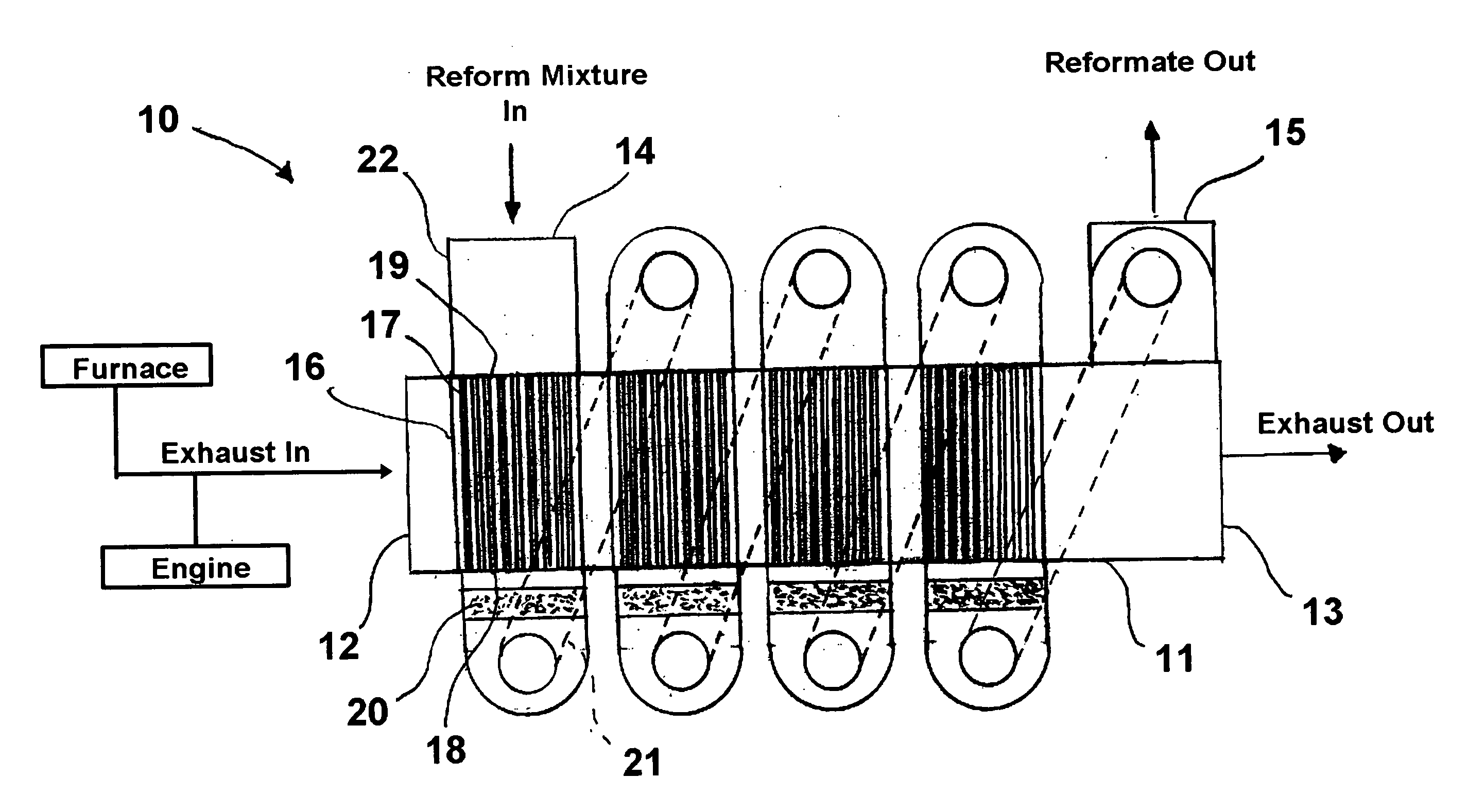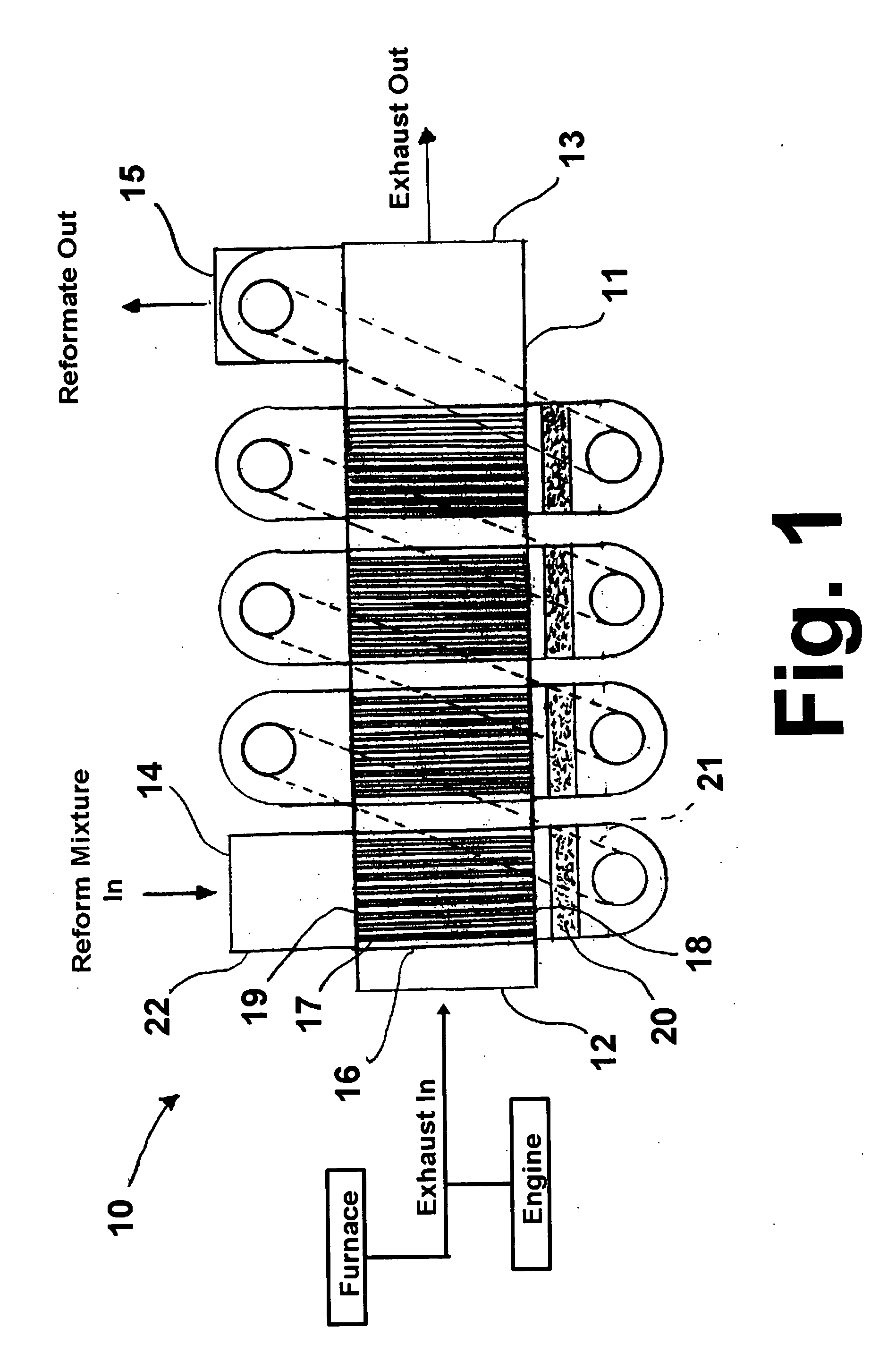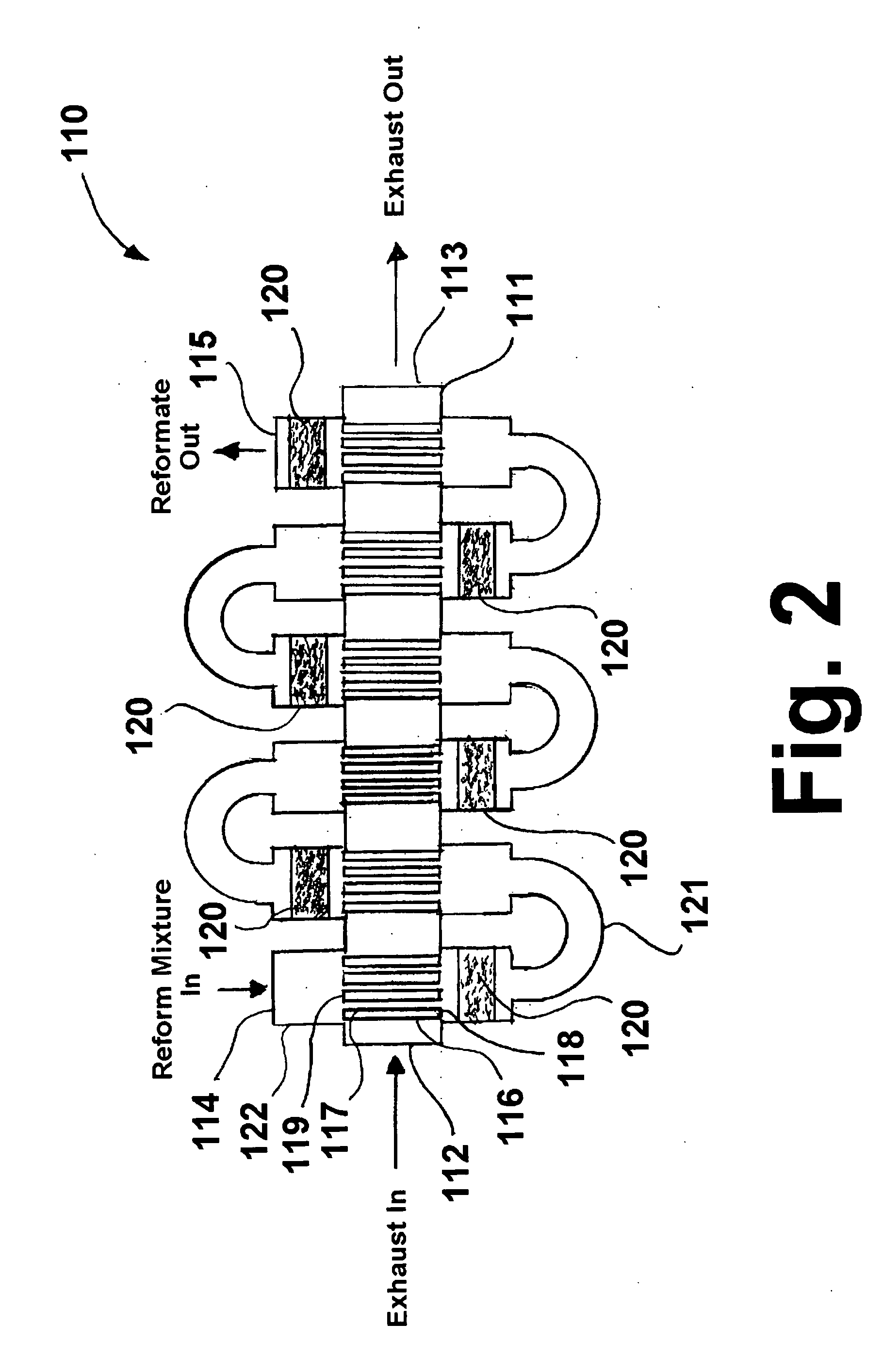Recuperative reforming reactor
a technology of recuperative reforming and reactor, which is applied in the direction of machines/engines, combustion air/fuel air treatment, and combustion process, etc., can solve the problems of increasing the urgency of efforts, unable to meet the needs of engines, and unable to achieve rapid heat dissipation, etc., to facilitate the catalytic reforming reaction, facilitate the effect of recuperative reforming and high heating valu
- Summary
- Abstract
- Description
- Claims
- Application Information
AI Technical Summary
Benefits of technology
Problems solved by technology
Method used
Image
Examples
Embodiment Construction
[0029] Recuperative reforming reactors in accordance with two embodiments of this invention are shown in FIGS. 1 and 2. Recuperative reforming reactor 10, 110 as shown in FIGS. 1 and 2 comprises a reforming conduit 22, 122 having a reformable fuel inlet end 14, 114 and a reformed fuel outlet end 15, 115. Reforming conduit 22, 122 comprises at least one tube bundle 16, 116 comprising a plurality of heat exchange tubes 17, 117, the tube bundle having a tube bundle inlet end 19, 119 having a reformable fuel inlet and a tube bundle outlet end 18, 118 having a reformable fuel outlet. A housing 11, 111 having a heat exchange fluid inlet 12, 112 and a heat exchange fluid outlet 13, 113 is disposed around the at least one tube bundle 16, 116 to provide a crossflow configuration of heat exchange fluid flow relative to the plurality of heat exchange tubes 17, 117 through the housing. It is to be understood that other configurations of heat exchange fluid flow relative to the plurality of heat...
PUM
 Login to View More
Login to View More Abstract
Description
Claims
Application Information
 Login to View More
Login to View More - R&D
- Intellectual Property
- Life Sciences
- Materials
- Tech Scout
- Unparalleled Data Quality
- Higher Quality Content
- 60% Fewer Hallucinations
Browse by: Latest US Patents, China's latest patents, Technical Efficacy Thesaurus, Application Domain, Technology Topic, Popular Technical Reports.
© 2025 PatSnap. All rights reserved.Legal|Privacy policy|Modern Slavery Act Transparency Statement|Sitemap|About US| Contact US: help@patsnap.com



